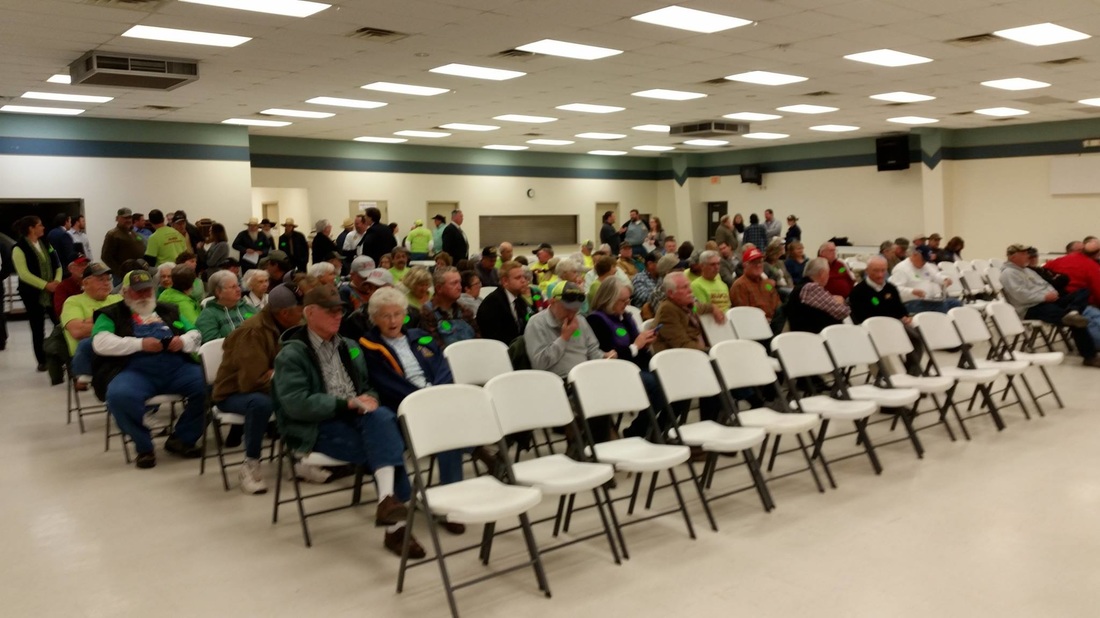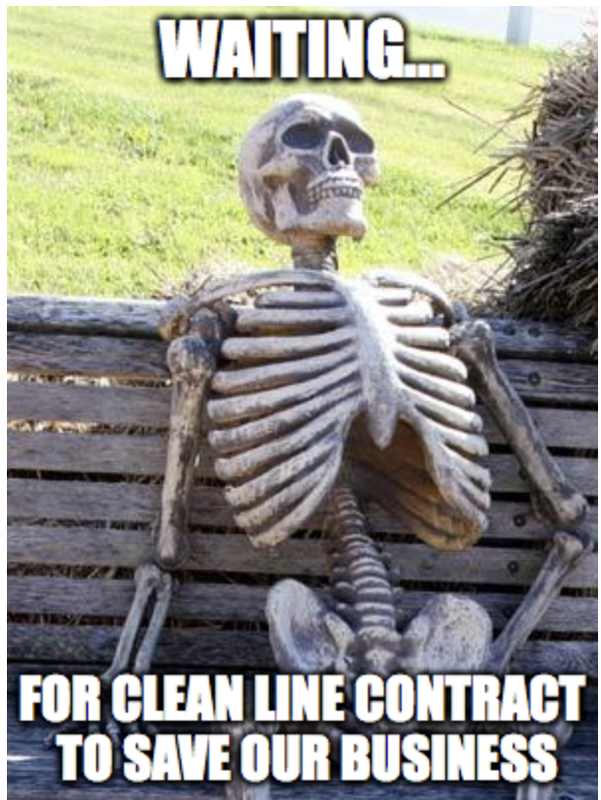Cameron Community Center, 915 Ashland Avenue
Dec. 13, 2016: Faucett, 6:00 p.m.
Mid-Buchanan High School, Multipurpose Room, 3221 SE Route H
Dec. 14, 2016: Polo, 12:00 p.m.*
Community Center at Stagecoach Park, 1010 Main Street
Dec. 14, 2016: Carrollton, 6:00 p.m.
Rupe Community Center, 710 Harvest Hills Drive
Kelly Sherman of New London: "The irony of this sickens me...our sons are in the military and are willing to die for our country, but they can't come home to the very land they will inherit, it will be taken from them and devalued forever."
Larry Markley: "If this energy is so good for Missouri then why don't they sell it all here?"
As expected, Grain Belt Express stepped up their game to deliver even more clueless advocates for their project than before. The first day, they presented a bunch of students from St. Louis University. FREE FOOD AND DRINK, and at a popular St. Louis brewery no less! Do you all need me to buy you a drink in exchange for showing up and speaking your mind? (Or really, my mind, because that's more apt.) Pathetic!
So, what did these students, and their Sierra Club counterparts have to say for themselves? They told the PSC that Grain Belt Express would shut down existing coal-fired power plants in Missouri and clean up the air. Nothing could be further from the truth!! I'm betting they didn't get a copy of Grain Belt's "contract" with Missouri municipalities to go with their free beer. The "contract" also includes up to 50MW of transmission service from Missouri to Indiana, where the line is proposed to connect with PJM Interconnection, the regional grid that serves the mid-Atlantic states. What are Missouri municipalities planning to ship to Indiana? Will they be re-selling their "clean" electricity to eastern cities? Of course not! They are creating an arbitrage opportunity whereby they may sell their own dirty, stinking generation (such as Prairie State) into PJM markets when price differentials are favorable. This will create new markets for dirty Missouri generation and prolong the life of the coal-fired power plants that currently foul Missouri's air. Without a "clean" line to open new markets for them, these plants would be forced to close when competing with regional renewables. With a "clean" line, however, they can continue to belch their dirty exhaust into Missouri's air, and sell their output into expensive eastern markets for many years to come. Silly beer-powered advocates! If you'd spent more time actually researching the project, instead of simply repeating Clean Line's glitering generalities, you might actually take some action to clean up the air you breathe.
The same goes for the GBE advocates who simply accept and repeat the falsehood that GBE will save consumers money on electric rates, instead of spending just a moment to research the facts. Where did this magical "savings" come from? Did you ask? It came from here:
Preliminary calculations, assuming existing production tax credits for wind project participation in the project, could reduce costs by as much as $10M/year or $10 per megawatt hour compared to delivery of other wind projects from SPP to MISO.
And those Clean Line advocates from economic development and chamber of commerce offices? They believe they will be showered with tax payments and jobs. Reality will be far different, and not equal to the cost of hosting the line and a few temporary, low-wage jobs. They're in it because they think they smell a big payday.
Which leads us to the another kind of advocate -- companies who think they will be awarded contracts for supplies and labor. They support the project simply to fill their own pockets.
A landowner at one of the hearings observed that many of the Clean Line advocates left the hearing as soon as they had spoken. They have no skin in the game. Those sincerely interested in the project stayed through the entire hearing... those were the landowners.
And as far as the handful of landowners who have popped up to support GBE, isn't it funny that they all touted the same fictional "$10M savings"? It's almost as if their comments and Letters to the Editor were heavily edited by Clean Line. I wonder if that cost extra, aside from any easement payments made to date? Greed can make some folks do despicable things. At any rate, they are soundly outnumbered, hundreds to one.
So, week one of public hearings have come and gone. Score one for the landowners, who won the moment by simply showing up and being genuine! Bravo!



 RSS Feed
RSS Feed